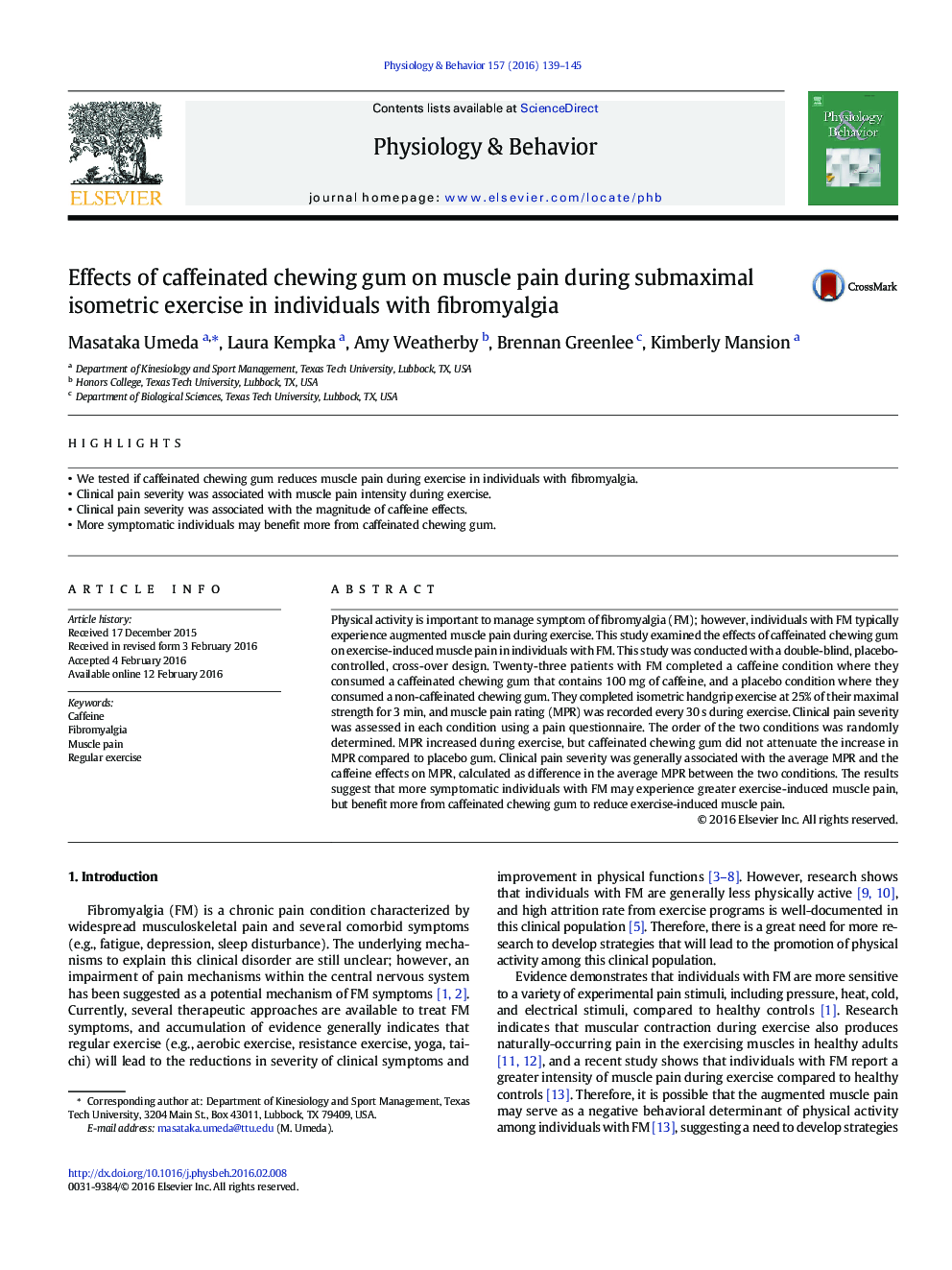| Article ID | Journal | Published Year | Pages | File Type |
|---|---|---|---|---|
| 2844016 | Physiology & Behavior | 2016 | 7 Pages |
•We tested if caffeinated chewing gum reduces muscle pain during exercise in individuals with fibromyalgia.•Clinical pain severity was associated with muscle pain intensity during exercise.•Clinical pain severity was associated with the magnitude of caffeine effects.•More symptomatic individuals may benefit more from caffeinated chewing gum.
Physical activity is important to manage symptom of fibromyalgia (FM); however, individuals with FM typically experience augmented muscle pain during exercise. This study examined the effects of caffeinated chewing gum on exercise-induced muscle pain in individuals with FM. This study was conducted with a double-blind, placebo-controlled, cross-over design. Twenty-three patients with FM completed a caffeine condition where they consumed a caffeinated chewing gum that contains 100 mg of caffeine, and a placebo condition where they consumed a non-caffeinated chewing gum. They completed isometric handgrip exercise at 25% of their maximal strength for 3 min, and muscle pain rating (MPR) was recorded every 30 s during exercise. Clinical pain severity was assessed in each condition using a pain questionnaire. The order of the two conditions was randomly determined. MPR increased during exercise, but caffeinated chewing gum did not attenuate the increase in MPR compared to placebo gum. Clinical pain severity was generally associated with the average MPR and the caffeine effects on MPR, calculated as difference in the average MPR between the two conditions. The results suggest that more symptomatic individuals with FM may experience greater exercise-induced muscle pain, but benefit more from caffeinated chewing gum to reduce exercise-induced muscle pain.
